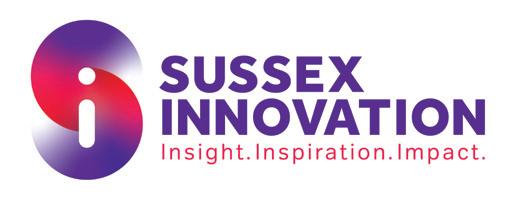
3 minute read
What are we going to do about workplace AI?
Artificial Intelligence has reached a tipping point over the past year, as a wide range of applications have rapidly moved from intriguing novelties to reliable mass-market tools. Image generators like Dall-e and Stable Diffusion made headlines for their realistic imitation of human illustrators, ChatGPT demonstrated an ability to quickly produce human-sounding text, and now consumer software from Microsoft Office, to Google Analytics, to Adobe Creative Suite are being upgraded with in-built AI tools to speed up workflows and reduce repetitive manual tasks.
Broadly speaking, the most practical AI tools already in use fall into a handful of different categories: n Automation tools carry out repetitive, time-consuming tasks such as data entry, invoice processing, and report generation. They are intended to streamline workflows, reduce errors, and improve efficiency. n Chatbots are used to answer common customer queries and provide customer support. They are also increasingly used internally to resolve common employee queries or troubleshooting needs, and perform basic tasks such as scheduling meetings. n Predictive analytics uses machine learning algorithms to analyse data and make predictions. This technology can be used to forecast sales or optimise cashflow. n Personalisation tools can create bespoke experiences for customers, such as recommending products, delivering targeted marketing or tailoring customer service interactions.
Each of these types of tool has been gradually adopted by many small businesses over recent years, and may not be the sort of thing you immediately think of when you hear the phrase ‘AI’.

The next generation of AI tools are predicted to take the technology much further, into every corner of our working lives.
More advanced automation tools are already beginning to be capable of making autonomous decisions and recommendations, carrying out more complex tasks without requiring human time and skill to build from the ground up. Improvements to Natural Language Processing are helping machines to understand much more complex queries and requests, and respond in more human-sounding language. These are the two major shifts that will start to make AI a much more practical productivity tool.
If introduced smartly, the major benefit of workplace AI will be the technology’s ability to reduce administrative burden on employees, freeing their time to focus on more meaningful and fulfilling work. However, AI solutions also present a risk of negatively impacting on wellbeing and job satisfaction. Their implementation must be carefully managed to mitigate that risk.
Most of the concerns that have been voiced about the advances in AI have suggested that skilled jobs will be displaced, in much the same way that the industrial revolution reduced the demand for craftspeople. These transitions have historically been extremely stressful and destabilising for workers, who lose the sense of control and autonomy over their work.
With this in mind, here are several pointers for any small business looking to invest in AI whilst maintaining a strong company culture: n Start small, by identifying a specific task or process to improve. Test the technology and see how it will work in practice. Don’t try to change everything overnight. n Consult employees, to understand which tasks place the biggest and least welcome administrative burden on them. Take time to review their job roles together and listen to their insights about what would make them feel more productive. n Be transparent about what technology is being used and why. Hold regular team sessions to discuss and refine the direction your adoption of AI is going in. n Provide training so that employees are comfortable using and adjusting to the technology to fit their needs; make them feel empowered in their roles rather than outsourcing the implementation process. n Monitor results to ensure that they are delivering the expected benefits. Are team members spending increased time on projects that offer more value to the business?
If you would like to know more about how AI can bring efficiencies to your business, please watch this space for the launch of our AI knowledge Hub in June 2023 www.sussexinnovation.co.uk/events


Like many readers of this article, the topic of AI is increasingly relevant to me. As a content writer by trade, I’ve watched the countless AI-assisted articles published in 2023 with some trepidation. Are the robots coming to take my job?
As an experiment, I typed my precis for this article into ChatGPT to see what it produced. It returned a version that was heavy on facts, with simple, descriptive sentences, and light on style, insight and narrative resonance. It would have made for a quick thing to write, but a boring thing to read. However, with a little more prompting and instruction, the results were clear and well-written enough that I felt comfortable using them as a draft template from which to begin writing.
Ultimately, this may be the ideal application of AI tools in the workplace as the technology continues to evolve. The fantasy of AI carrying out all our work for us is misplaced, at least for the foreseeable future. But if we can use it to expedite the tasks that consume our time and don’t fulfil us, everyone stands to benefit.
Company Of The Year
Sponsored by










